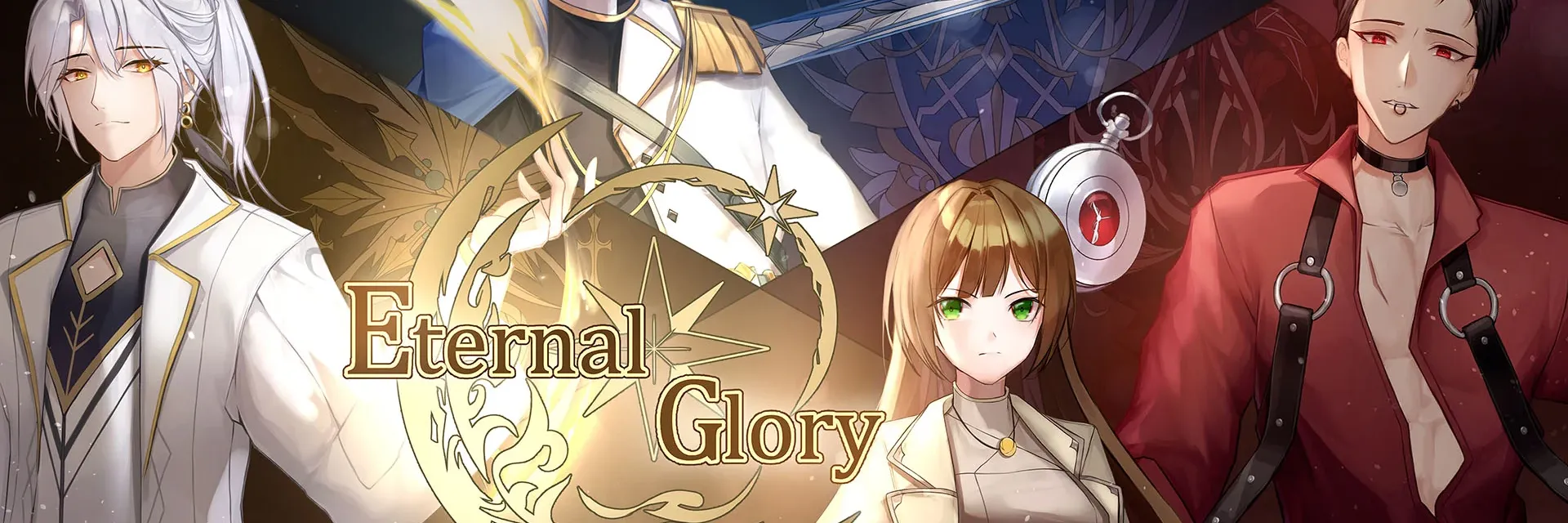
Eternal Glory Demo
Nine years have passed since the day that curse befell me. Today, for the first time, I return to the ruins of the house where I once lived with my parents.

Otome.com: In the world of indie game development, creating an engaging experience as a solo developer is no easy feat. But one creator has done just that with Dark Nights, an otome game that combines intricate storytelling, a mysterious atmosphere, and a cozy, traditionally manga-inspired art style. Over six years, Pinlin (the dev) built an immersive world filled with suspense, complex characters, and multiple narrative routes—all driven by passion and a vision to create something entirely on their own.
In this interview, we’ll look closer at the journey behind Dark Nights. From the initial sketches and character designs to overcoming the challenges of being a one-person team, we’ll uncover how this game came to life. Along the way, we’ll explore the developer’s artistic influence, and the drive to make every character feel alive. Plus, we’re sharing exclusive content from the upcoming Dark Nights DLC and a glimpse at some behind-the-scenes developer sketches that show the evolution of the game’s visuals.
So, If you’ve ever wondered how to bring your solo project to life, this is the perfect opportunity to explore the development process and the challenges that come with it.


Pinlin: Even before I discovered digital art, I enjoyed drawing original characters and creating stories. It was a way to pass the time after school back then. The worlds were depicted in the form of short stories or comics. I never showed these to anyone. Although the idea of creating immersive worlds stuck with me. For a while, I only created stories in single illustrations, but I wanted to share more complex ideas and a way to make characters feel alive.
Creating an Otome game is the perfect medium to interact with characters.
Most of the side characters already existed before I started this project. They were a base for the setting. The title is straight-forward; dark things happening at night or going through dark times. I started Dark Nights with 4 routes, each with a specific theme. Various media inspired me to write the stories, but I’ll come back to this topic later.
With zero experience, I wanted to keep it short and leave it as a passion project.
However, as I learned more with time, the project grew ambitious. Especially from feedback and people who offered help. I tried pushing my capabilities as a writer and artist.
In the past, I collaborated on some projects, but nothing was ever finished. I believed that no matter what, I’d finish Dark Nights. Another reason why I went solo is that I have full control
over the development. I had a specific vision in mind. By doing all tasks myself, I could create
and edit everything in real time. In the end, it took nearly 6 years to finish the game. The
desire for creating and people’s support kept me going. At times, I would finish two
illustrations per day or write thousands of words without a break. I wouldn’t ask anyone to keep
up with me, haha.
Pinlin:Hmm, this is a chicken or egg question. Otome games inspired me to draw, and being able to draw opens the path to making otome games. I remember the first time I encountered the concept of making choices during a story in book form. I didn’t know if there was a name for this genre, but the idea was exciting.
Before I played otome games, I saw pretty character illustrations in a setting on the internet. I didn’t know these were from a game. I accidentally discovered this genre by downloading a mobile app called “Shall We Date: Ninja Love”. This game doesn’t exist anymore, but it was one of my early experiences that got me further down the rabbit hole.
I love the stylized illustrations in Japanese titles. The English Otome community was very small back then. I wanted to create stylized art and bring it to a global audience.

Pinlin: Some of my early art inspirations were Amnesia Memories, Clock Zero, and Glass Heart Princess.
It is very obvious from my old drawings. I noticed that many Otome games use the same concepts and compositions for CGs, so I began looking outside this genre to expand my horizons.
Back then, I was very active on DeviantArt. It is an art platform where people share art and stories. Many artists there influenced me to start my artistic journey. This is why the art style in Dark Nights is inconsistent sometimes. Over 150 illustrations were (re)drawn over the span of nearly 6 years.
My artistic preferences were bound to change.
Nowadays, I get inspired from many sources. From film to niche fanart. Combining these leads to something more unique than from only one source.
Pinlin: I like the thrill of putting puzzle pieces together and uncovering something. Each storyline has its mysteries and is inspired by different media.
While they are independent stories, there is a fine thread connecting them. They have different perspectives on the same theme.
Pandora Hearts is a series that shows you one narrative at first, then a different perspective, and the plot changes. Another show that inspired me is Higurashi: When They Cry. The setting starts as a slice of life, and things quickly become dark. That is the only similarity with Dark Nights. In general, I prefer writing characters with personal goals rather than acting as a collective.
While mystery is the main topic, I like to focus on character interactions too. I hope that the player grows attached to the character, so certain scenes feel more impactful. Some aspects are taken from my old notebooks. I wanted to make my childhood dream of bringing a story to life come true.
It’s the first time I’ve written a big, complex story, so there’s still a lot to learn. After releasing the game, I realized there were still many unanswered questions. I leave the interpretation to the player but there is so much more to explore in Dark Nights.
Pinlin:The exact dates from the very first concept art to full release: 12 February 2014 to 31 October 2019.
I recorded my progress in a journal, which I first posted on DeviantArt, then moved on to the blog on my website. I only posted when I had a lot to show, so the updates were inconsistent.
At first, I was a bit afraid of putting my project out there, but I’ve only received warm comments.
It felt like having a friend looking over my shoulder and encouraging me to keep going.
The biggest challenge was dealing with my inexperience. With that, I mean, I had no experience in any aspect of Otome development. I had to build everything from scratch. As a passion project, Dark Nights gave me the freedom to learn new skills and experiment. As I progressed, my vision changed.
I regret not planning better because I had to rewrite and redo many assets. For example, I started out with the main character designs before establishing any lore or background. I wanted to draw inspiration from visuals, but later on, I had to change it because the designs didn’t match their personalities. Being a perfectionist is a curse; nothing is ever good enough. At some point, I let that urge go and focused on a broader view.
Regardless of the reason, I think the biggest challenge for all developers out there is
finishing a project.
Pinlin: Honestly, I didn’t plan much when I started out. My approach is writing as I go and editing the story later. I key some key scenes in mind and try to connect the dots between them. I only worked on one storyline at the time. The order from first to last: Junoru, Zeikun, Sachiro and Kurato.
I started with Junoru’s route because it’s inspired by a story in my notebook.
However, the direction ended up entirely different. His route got me to establish the world
and character connections.
I’d say Sachiro was the most fun to write.
At the beginning, he was lost just like me (in writing), but his lore quickly got established. Furthermore, I was looking forward to seeing people’s reactions to the plot twist in his route.
The most difficult character was Kurato, both in personality and storyline.
I already created 3 distinctive stories, and he has to bring something new to the table. He is the most awkward character, but he likes to joke around people.
While writing him was hard, I had a lot of fun with his dialogues. It was refreshing to add a character who doesn’t take things seriously but helps in times of need.
So far, I haven’t mentioned Zeikun. He was the hardest to design because I didn’t know what
he’d wear. He made the biggest change in appearance out of the cast.


Pinlin: At first, I only asked for feedback from friends. When more people offered help, I started
recruiting editors and proofreaders. Thanks to their hard work, the game got more polished.
I created a Discord server after releasing the demo on 7 August 2018.
It covered the prologue and first chapter of each route.
Most of the feedback was quite positive. Some of the critiques I got were about the flow, so I considered this for the full game. It was fun reading player theories about the characters. Chapter 1 was merely an introduction. Some people pointed fingers at which characters were innocent or guilty.
The true answer is more complex, but I refrain from spoiling.
A funny theory is that the main character slept through the entire history class and all storylines are just dreams. Even after releasing the full game, theories still go around. Some side characters are clouded in mystery.
I can share some funny comments my editors left on the script. Thanks to the people that
kept up with my silly typos and grammar mistakes
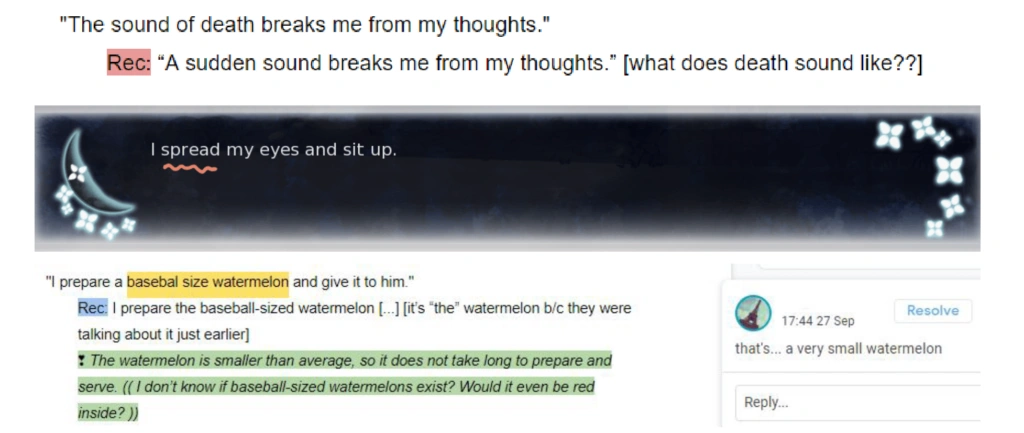
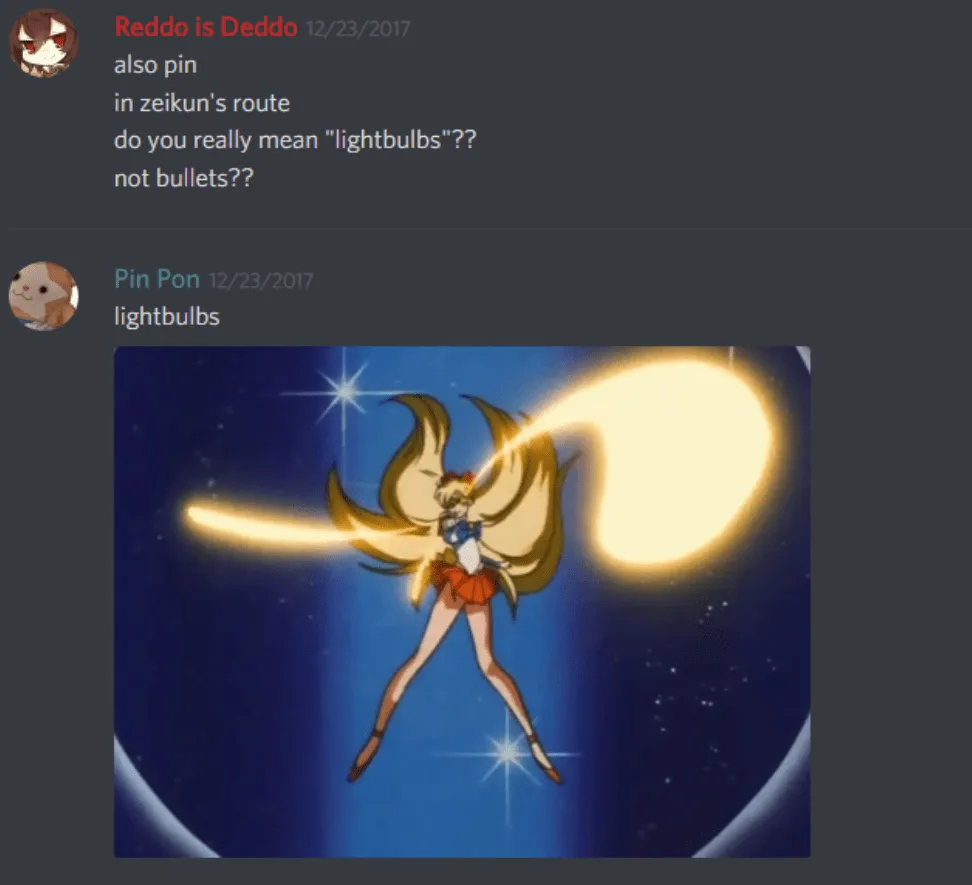

Pinlin: After this project, I needed a long break from working on large projects by myself.
While it was fun, it was also very demanding. I had to pass opportunities, and overall I became less active on other platforms. After releasing Dark Nights, I focused on other mediums for storytelling such as comics. I created Monochrome meets Color in 2020. While working on these projects, it felt like my artistic development was halted. So, for a while, I just focused on illustrations and character design work.
I did some concept art for a 3D shooter, Code ZIN: Esper Arena. Furthermore, I’m the character designer/background artist for a physical board game, Studium No Exit.
If I decide to make another visual novel, it won’t be as big or complex, and it will likely explore a different genre. I have new concepts in mind centered around psychological or adventure themes, but when that will happen, I’m not sure. For now, I want to finish other projects first.
Pinlin: Speaking of projects, I’m working on the DLC since it got funded in January 2023.
I never expected to work on Dark Nights again, so I’m thankful to the community who made it
possible!
Earlier, I mentioned that the main game left many unanswered questions.
The DLC contains 2 new routes, a secret route, and side stories.
The new routes focus on Roya and Chain. Initially, I wanted to include Roya as one of the main love interests, but I thought he’d be the least interesting. He is the older brother of Junoru, so they share a similar backstory.
However, in the DLC, I’ll show you a new perspective from his side. In the main game, he didn’t get the chance to appear much on screen. I find it difficult to write flirty characters hence, he got the short end of the stick. Although, while working on his script, I decided to go all out. You can expect many steamy and funny moments in his route.
Chain, on the other hand, was almost a blank canvas. He has a clear goal, but his past is a mystery. It shaped the character he is today, so that was interesting to explore.
There are many things I wanted to improve in the main game, from writing to GUI. These will
be updated in the DLC. One of the main critiques of the game was MC’s actions and
personality. Most of the time, she was acting too reckless. I added more inner thoughts to
her character and moments of reflection. I hope that the players can connect better with her
this way.
Furthermore, I completely rewrote the prologue. It follows a similar plot, but it has a
different flow and events. I also added more choices and story branches.
The main game contains 64 choices in 4 routes. The DLC has 55 choices in just 2 routes.
Aside from improving the art, I wanted to improve my writing.
I like to flesh out side characters, so they aren’t just in the background. In Chain’s route,
you’ll find new faces. Lastly, I added some quality-of-life features, such as highlighting
choices you’ve already picked and a gallery for achieved endings.

Pinlin: Thank you for the praise!
It took me many years of research and experiments to develop an art style that suits my game.
I wanted something pleasant to look at and efficient.
After all, I have to create many illustrations in the same style. I used to work very painterly.
This was difficult to replicate. I switched to cell shade, but it looked too simple.
Now I found a middle ground.
Honestly, it still doesn’t feel like I’m there yet, but it’s getting close to what I want.
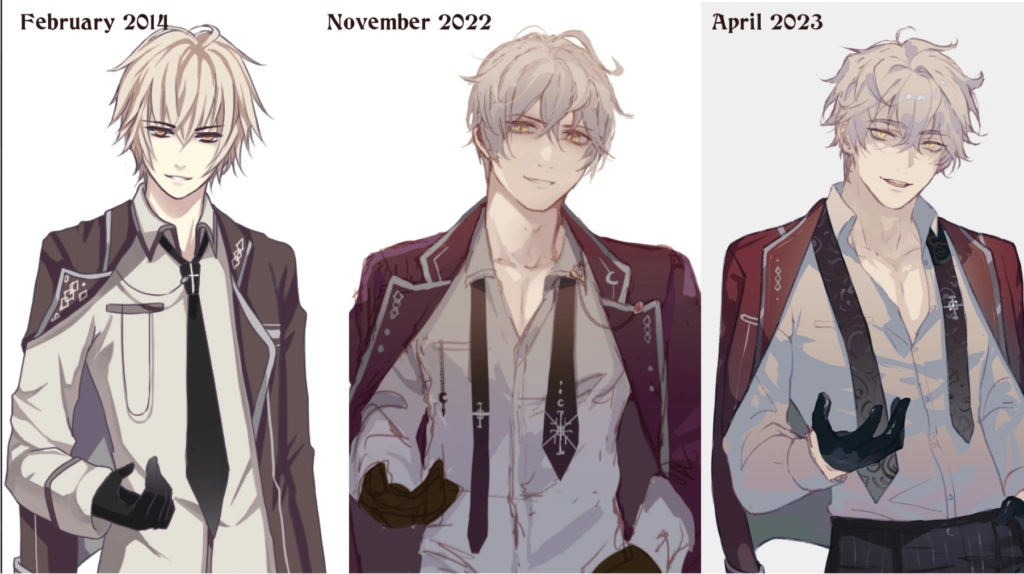

I mentioned that Zeikun went through the most change, design-wise. In the beginning, I had
very little information on what kind of character he was. “Someone who lives in the woods,”
hence the messy sewn clothes. When I established his story, I changed his clothes to
something oriental. Although some accessories made no sense, thus I changed it again. In
the latest design, it looks like he aged (just like me, haha).
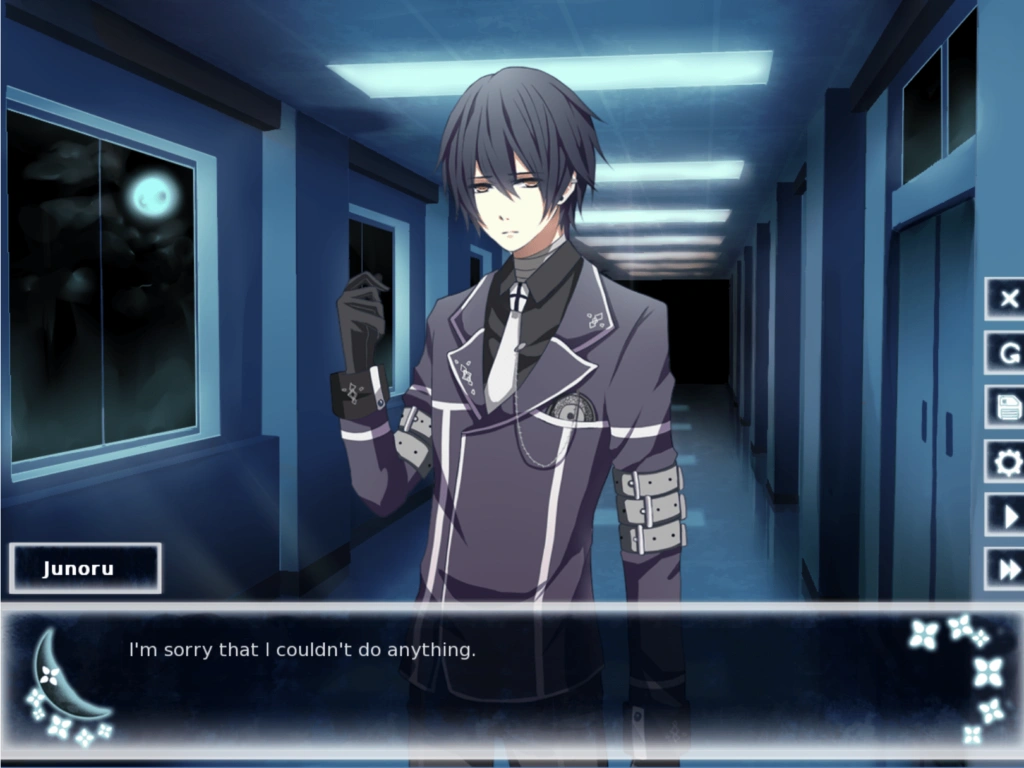
Alpha
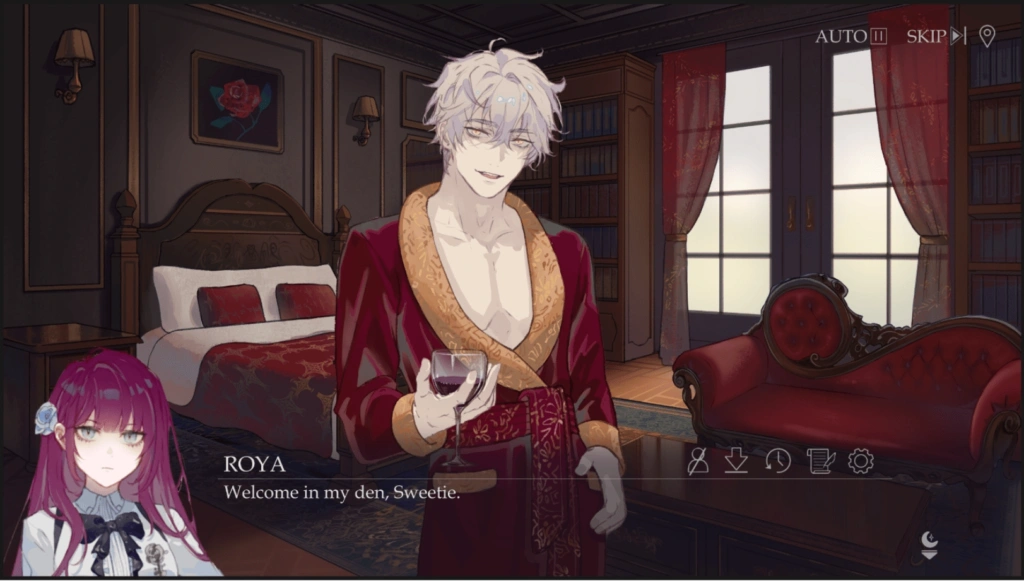
DLC
If I compare the screenshot during alpha and current DLC, I come a long way.
During the years of focusing on illustration, I tried to improve my backgrounds and graphic design.
Nowadays I find a simple yet stylized presentation much more appealing. In the end, it’s a matter of taste.
Pinlin: I’m humbled by the chance to talk about Dark Nights and share it with the community.
I wouldn’t have reached this far without your support.
In the DLC, I’ll take you again into the world of Dark Nights. This will be the final ride.
My next project is creating a Dark Nights artbook.
After that, I will continue where I left off my webtoon.
When I pick up visual novels again is uncertain. Who knows what story will be brought to life?

Otome.com: The story behind Dark Nights is a testament to the power of persistence, creativity, and the support of a dedicated community. This solo developer’s journey from original character sketches to the final game release shows that with enough passion and determination, even the most ambitious projects can become reality. The game’s cozy, manga-inspired art style beautifully contrasts its darker themes, creating a unique blend of visuals and narrative that has resonated with players around the world.
With an upcoming DLC and plans for even more content, Dark Nights continues to grow, offering players new perspectives and mysteries to uncover. For fans of Otome games and mystery stories alike, this is an experience you won’t want to miss. Stay tuned for what’s next from this talented creator—because if Dark Nights is any indication, the best is yet to come.
If you’d like to support Dark Nights and its upcoming DLC or contribute to the continued work of Pinlin, you can do so here: https://darknights-time.weebly.com/support.html.
Every bit of support helps keep these creative projects going!
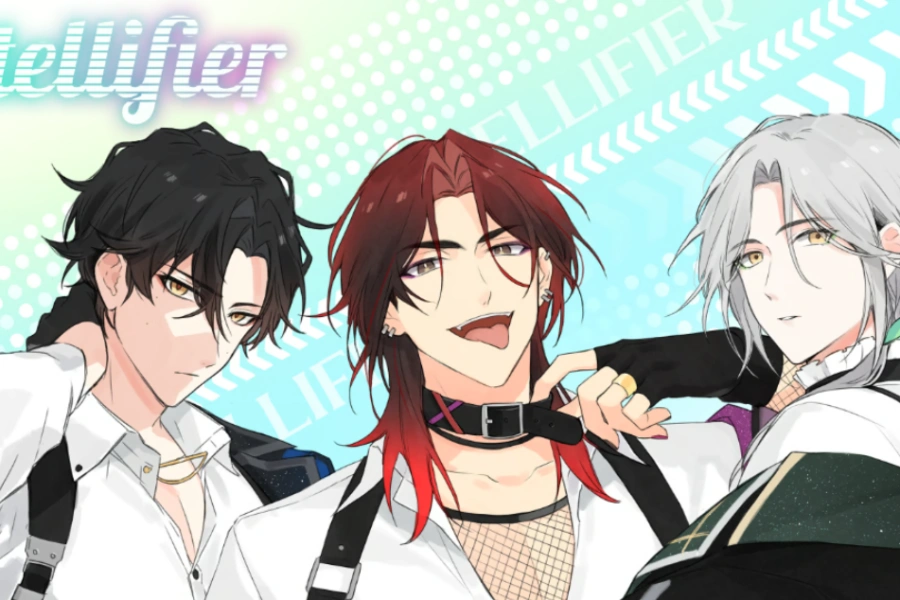
In a remarkable achievement for indie game development, Stellifier, a unique idol drama game by Nochi Studios, hit its Kickstarter goal of $6,888 in under...
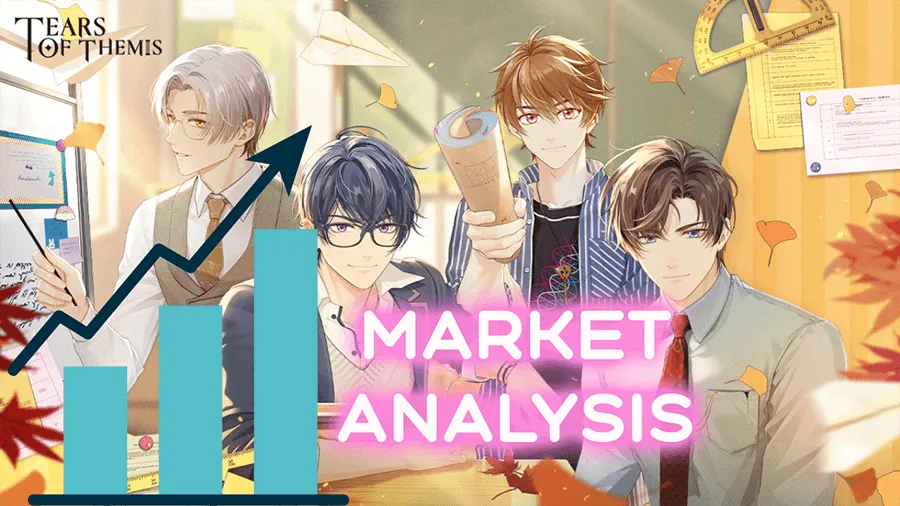
Tears of Themis is a story-driven romance and investigation game developed by miHoYo, best known for titles like Genshin Impact and Honkai: Star Rail. Blending...
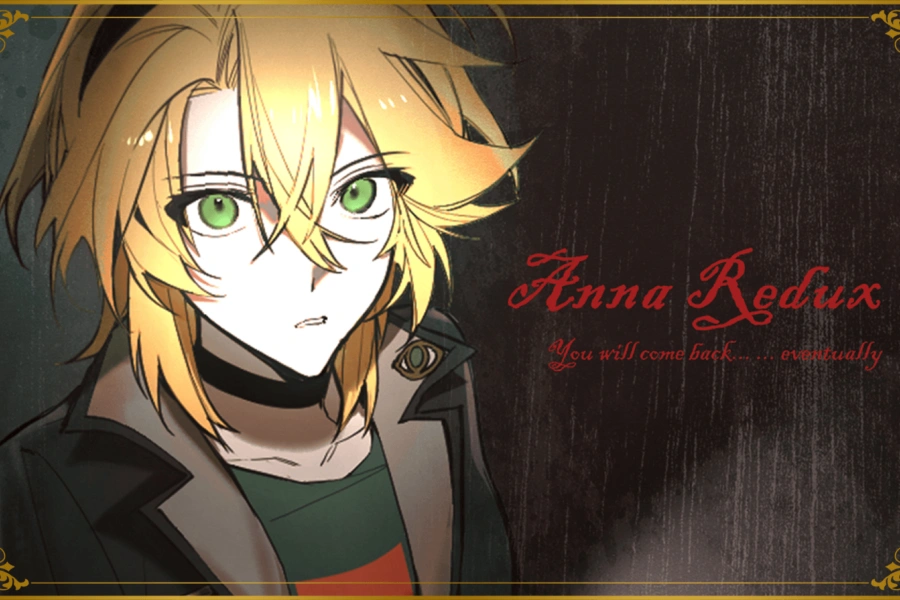
I know that horror isn’t everyone’s cup of tea, but it’s certainly mine, so I’m always happy to find a game in the otome sphere...